Nonsurgical procedures, such as liquid facelift and eye bag treatment, continue to grow in popularity these days. However, there are some cases in which surgery cannot be substituted. Only surgery can remove excess skin and significantly lift sagging tissue.
Natural changes from age and sun damage affect ligaments, skin, bone, muscle, and fat. These tissue changes can make one appear tired and run down. Certain aesthetic conditions that typically require surgery include:
- loose or sagging skin that creates folds that cover the eyelashes
- droopy brow that crowds and overwhelms the eyes
- fatty deposits in lower eye bags
- weak chin bone creating a double chin
- sagging neck skin and fat
One reason patients may have misgivings with surgery is the downtime and recovery. How much bruising and swelling will there be? When can one return to work or exercise? When can one appear “normal” and not draw unnecessary attention?
Initial downtime after surgery may be a few days to weeks, depending on various factors. Patients have asked to see early recovery photographs after plastic surgery to assess downtime. Keep in mind that individual downtime will vary.
Recovery after Eyelid Surgery
Eyelid surgery is a relatively minor procedure that may be performed with local anesthesia in select patients. Discomfort that patients have described after surgery is usually unremarkable. The eyes and brow may feel “tight”. The procedure varies from about one to three hours.
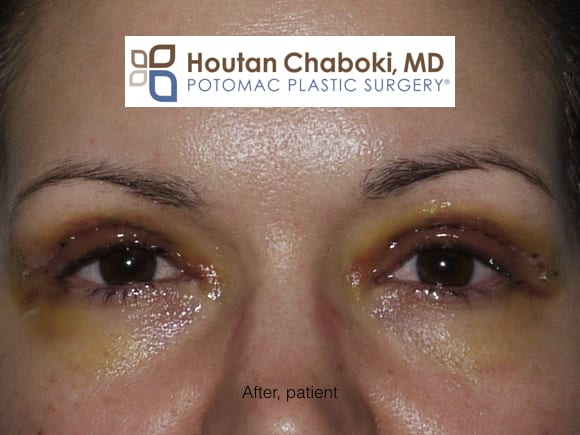
A few days after upper eyelid surgery (blepharoplasty) by Dr. Chaboki. Bruising and swelling from upper eyelid surgery can travel to the lower eyelids from gravity. The skin is moist with ointment to maximize healing.
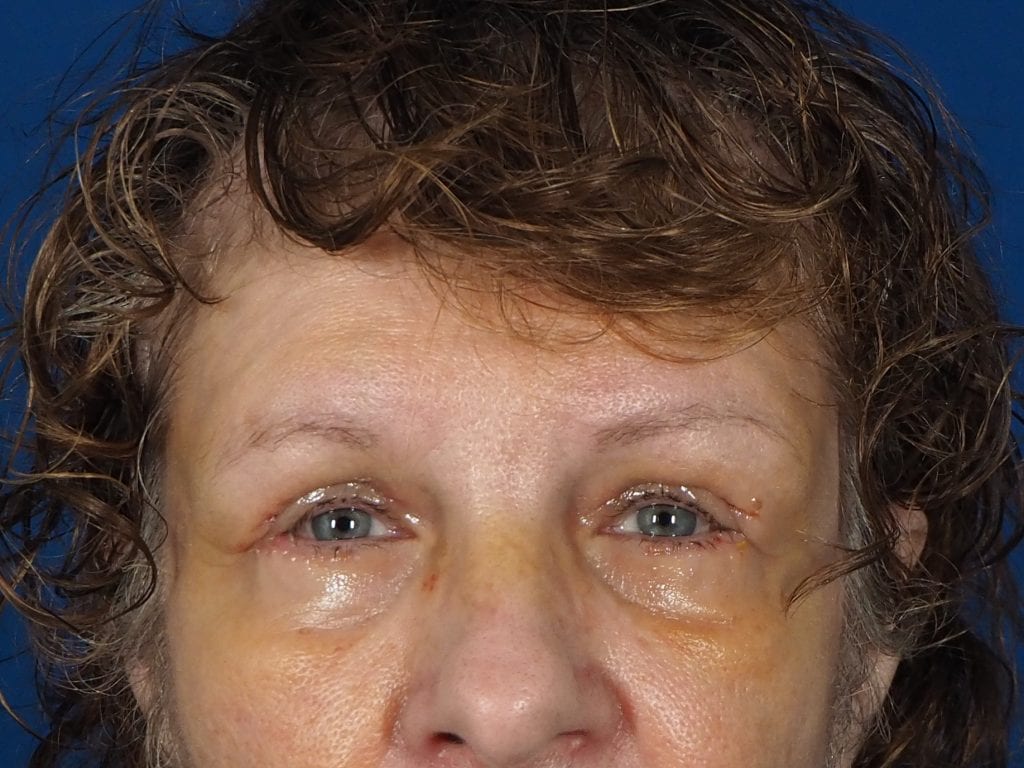
One week after limited incision brow lift, upper blepharoplasty, and lower blepharoplasty. Brow lift incision hidden within the hair. A majority of any bruising and swelling typically resolves within the first few days.
Patients often do not need prescription pain medication beyond the first day, if at all. Lubricating ointment and cold compresses may be applied to reduce bruising and swelling. Bandages, if used, after eyelid surgery are necessary for one day only.
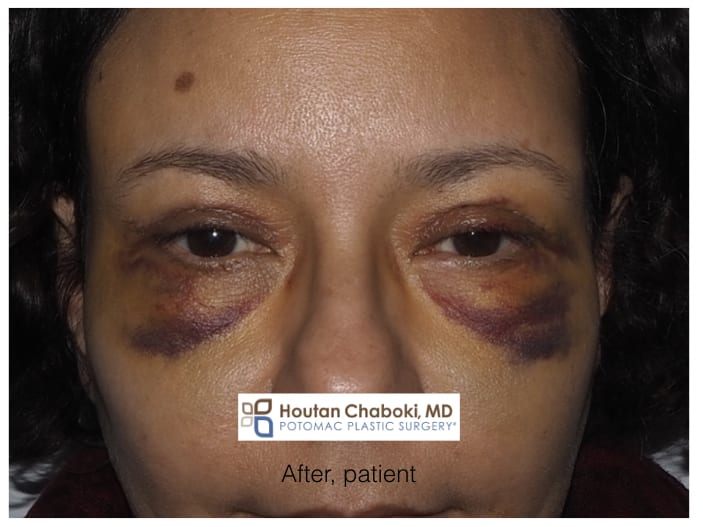
Several days after brow lift, revision upper eyelid surgery, revision lower eyelid surgery, and facial fat transfer by Dr. Chaboki. Patients can generally expect more bruising and swelling when multiple procedures are performed at the same time. Multi-procedure patients often return to the office within two weeks from surgery.
Bruising and swelling will occur after eyelid surgery, similar to any plastic surgery. This is masked easily by wearing sunglasses for the first weeks of recovery.
Recovery after Double Eyelid Surgery
Double eyelid surgery recovery is similar to other eyelid procedures. Double eyelid surgery, referred by some as “Asian eyelid surgery”, is a relatively minor procedure that is often performed via local anesthesia in appropriate patients. Discomfort that patients have described after double eyelid surgery is usually unremarkable.
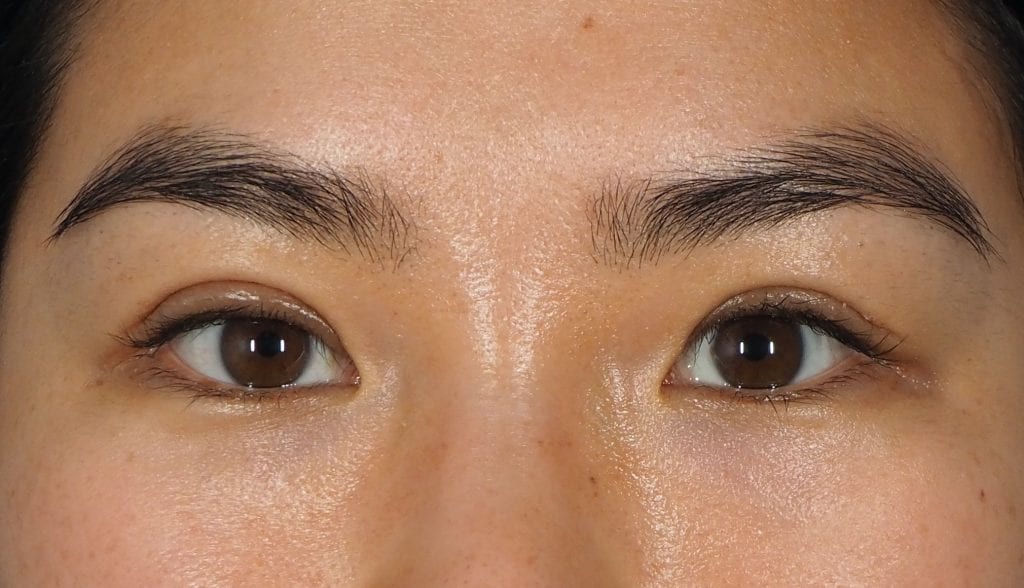
One week after double eyelid surgery by Dr. Chaboki. Patients use ointment on skin to minimize scars.
Recovery after Rhinoplasty
Rhinoplasty swelling and bruising are a common concern among our nose surgery patients. Similar to eyelid surgery, a majority of the healing occurs within the first week from surgery. Bruising and swelling will vary based on factors such as the complexity of the procedure. Revision rhinoplasty, open rhinoplasty, and significant bone reshaping generally have more swelling and bruising.
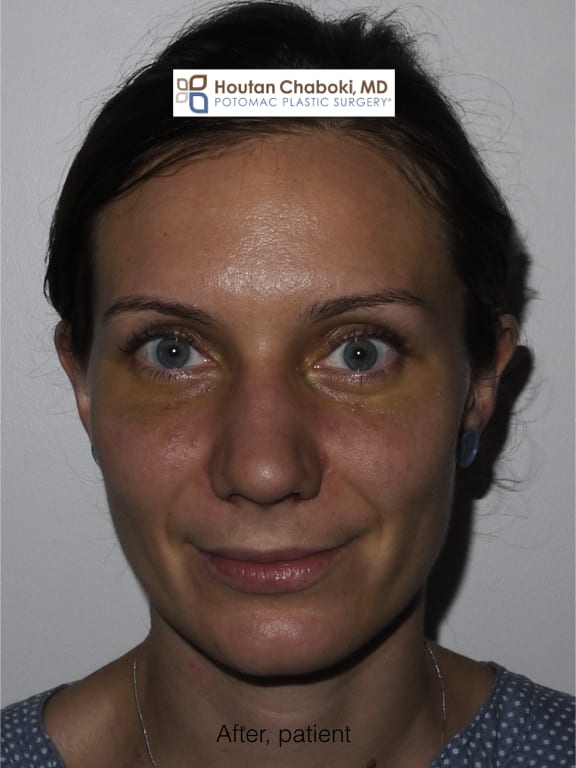
One week after closed rhinoplasty by Dr. Chaboki. Bruising and swelling can occur under the eyes and cheeks after nose surgery. Makeup may be used to hide recovery.
Dr. Chaboki specializes in closed rhinoplasty and preservation rhinoplasty. The procedure takes about two hours. While still healing, patients can typically return to work after one week, at which point the external cast is removed. Rhinoplasty downtime is reported minimal by our patients. Some report sinus pressure, mild nasal congestion, or mucous similar to allergies or a sinus infection with the initial healing. Patients use saline spray and antibiotic ointment inside the nose to promote healing and relieve these symptoms.
Final aesthetic results often take a year or so to develop as residual swelling subsides.
Recovery after Facial Fat Transfer
Facial fat transfer is a relatively minor procedure in which a small amount of fat is taken from the abdomen, thighs, and love handles to enhance the face. Common treatment areas include the cheeks, under eyes, smile lines, and lips. While bruising and swelling with fat transfer is typically greater as compared to filler injections, a many patients return to work very soon after the procedure. Makeup can typically be worn the next day for isolated fat transfer procedures. While patients may have a mild soreness from the area where fat is harvested, patients often do not have any pain following fat transfer.
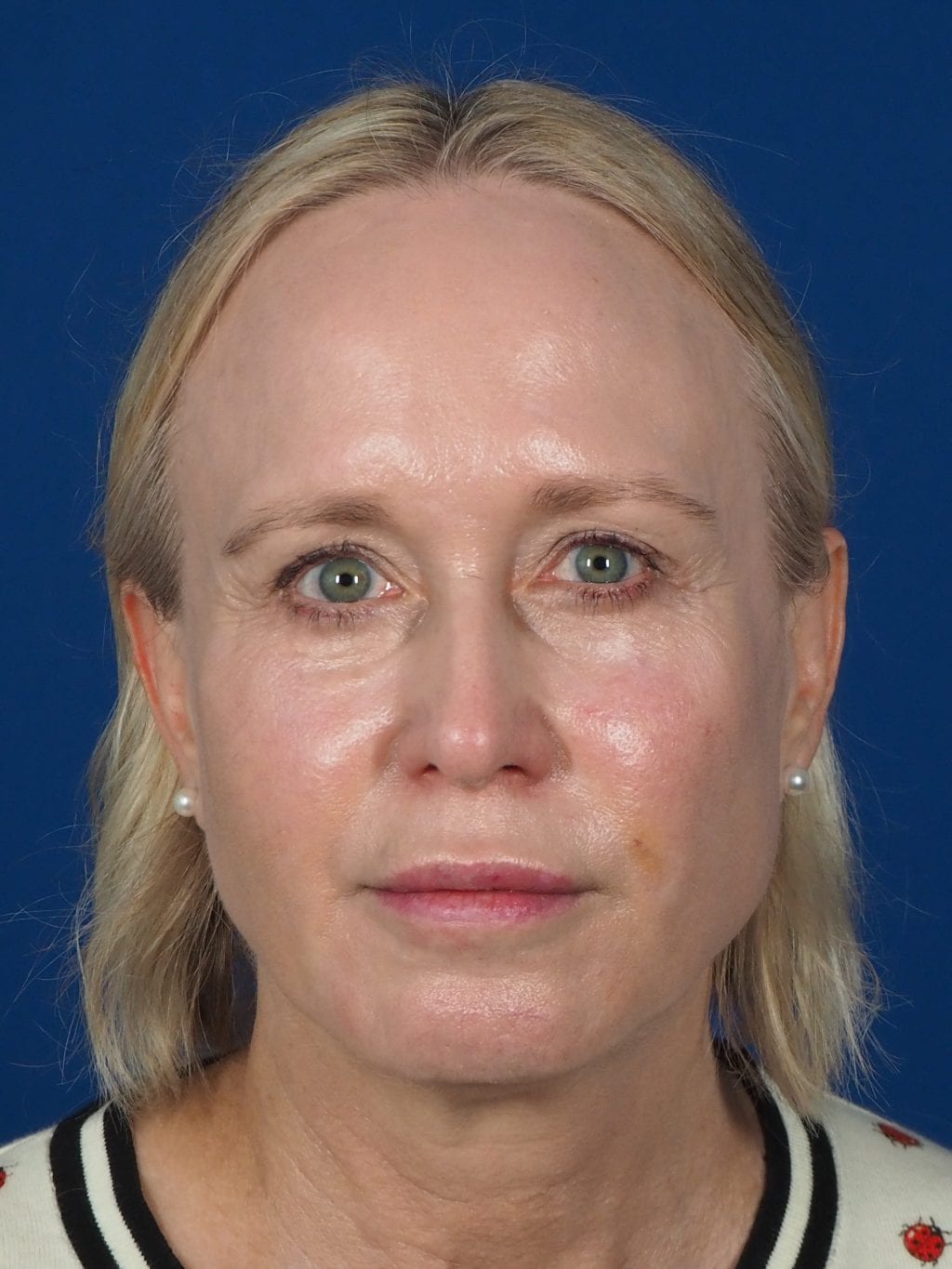
One week after facial fat transfer to the cheeks, under eyes, smile lines, and lips by Dr. Chaboki. Multiple areas are usually treated in one setting with fat transfer.
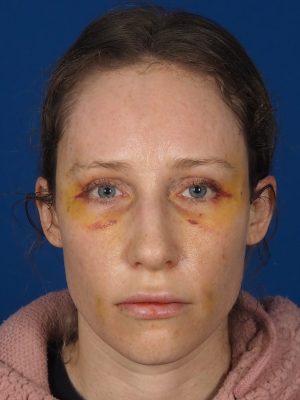
One week after lower blepharoplasty (eyelid surgery) and facial fat transfer to the cheeks, temples, under eyes, smile lines, and lips. Multiple areas are usually treated in one setting with fat transfer. Lower eyelid surgery is commonly performed with fat transfer.
Recovery after Facelift and Neck Lift Surgery
Facelift and neck lift patients wear an external chin strap that helps support the neck and jawline in the early recovery period. This elastic support is worn continuously for the first few days and can be removed when showering. Similar to eyelid surgery patients, facelift and neck lift patients may report “tightness” under the chin.
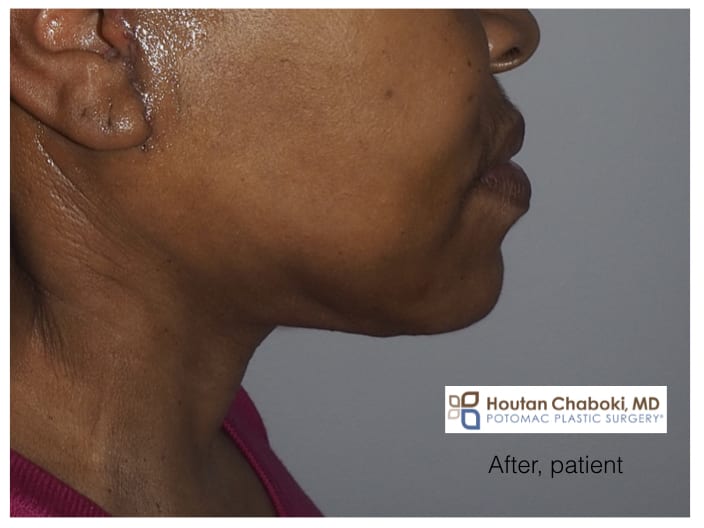
One week after lower facelift, neck lift, and facial fat transfer by Dr. Chaboki. Face and neck bruising is minimal in this patient, who has returned to work early after surgery.
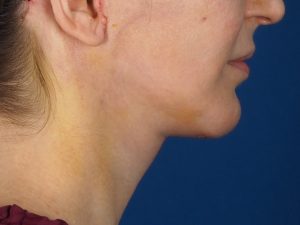
One week after lower facelift, neck lift, chin implant, and facial fat transfer by Dr. Chaboki of Potomac Plastic Surgery. Bruising and swelling is minimal in this patient.
External stitches dissolve with time. Facelift and neck lift patient usually return to wearing their hair back in pony tail after a couple weeks. Light earrings are typically allowed after a couple weeks.
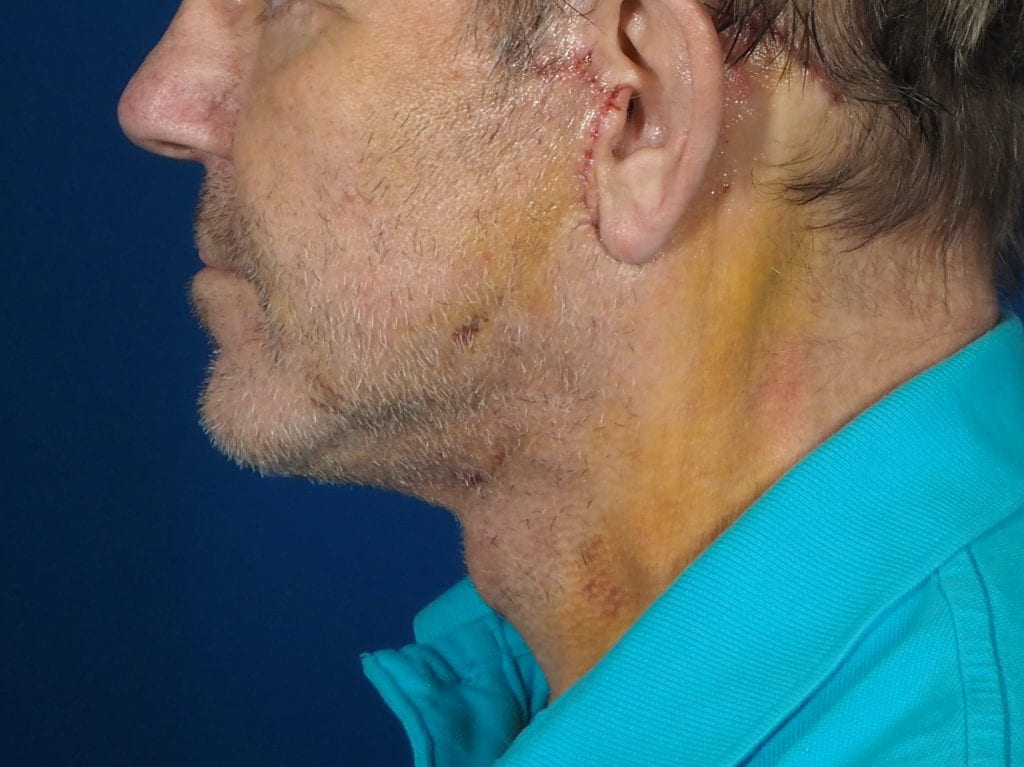
One week after lower face and neck lift by Dr. Chaboki. A majority of healing in recovery occurs within the first two weeks after plastic surgery.
Recovery after Chin Surgery
Chin surgery includes chin augmentation with an implant and/or chin liposuction. Bruising and swelling after chin surgery is typically less than one would experience with a full facelift or neck lift.
An elastic chin strap is worn for the first few days to support the neck and jawline. Men are advised to avoid shaving in the early recovery. Patients may report temporary chin and neck tightness after surgery.
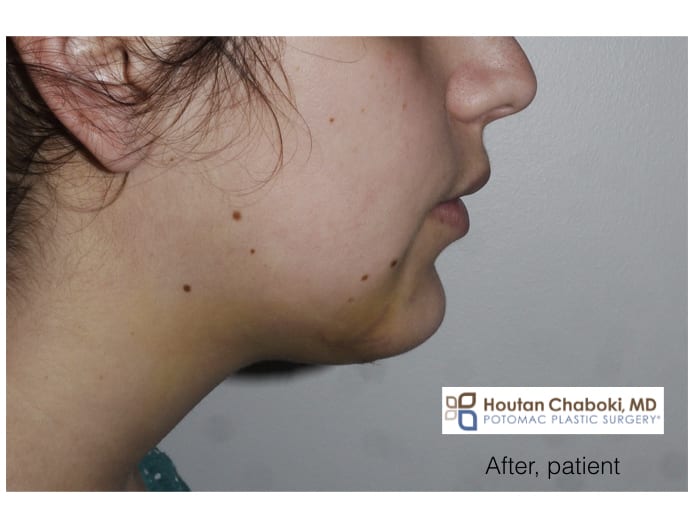
One week after chin surgery with liposuction and silicone chin implant by Dr. Chaboki. Face and neck bruising is minimal in this patient, who has returned to work early after surgery.
Chin surgery patients may have concerns about an external skin scar. Chin implant patients have a small incision hidden under the chin. The external chin stitches are visibly negligible even in the first week of healing, leaving very little evidence of a scar later in recovery. Read about our 4 Reasons for chin surgery from the outside.
Chin implant and liposuction patients can return to work within a few days. Ointment should be placed on the external incision to maximize healing.
Downtime after Plastic Surgery
Patients are advised to limit heavy activity after surgery. Strenuous activities or exercise increase the risk of bleeding, swelling, and bruising. Light activities such as walking may be performed soon after anesthesia. Heavy activity, such as aerobics, yoga, cycling, running, heavy lifting, or similar vigorous activities may be allowed after one to two weeks from surgery. Contact sports are generally allowed after 6 weeks from surgery
The decision for plastic surgery is mutually determined by patient and surgeon based on many factors, including patient preference. Ideal candidates for cosmetic surgery include healthy individuals who have realistic goals. Take the first step and contact the office to determine if you’re a possible candidate for surgery or other aesthetic procedures to improve your appearance.
Read more methods to improve your recovery after plastic surgery in our blog and website:
- reduce swelling after plastic surgery
- tips to hide plastic surgery during recovery
- Care Instructions after Plastic Surgery for our patients
Contact the office to schedule a consultation.

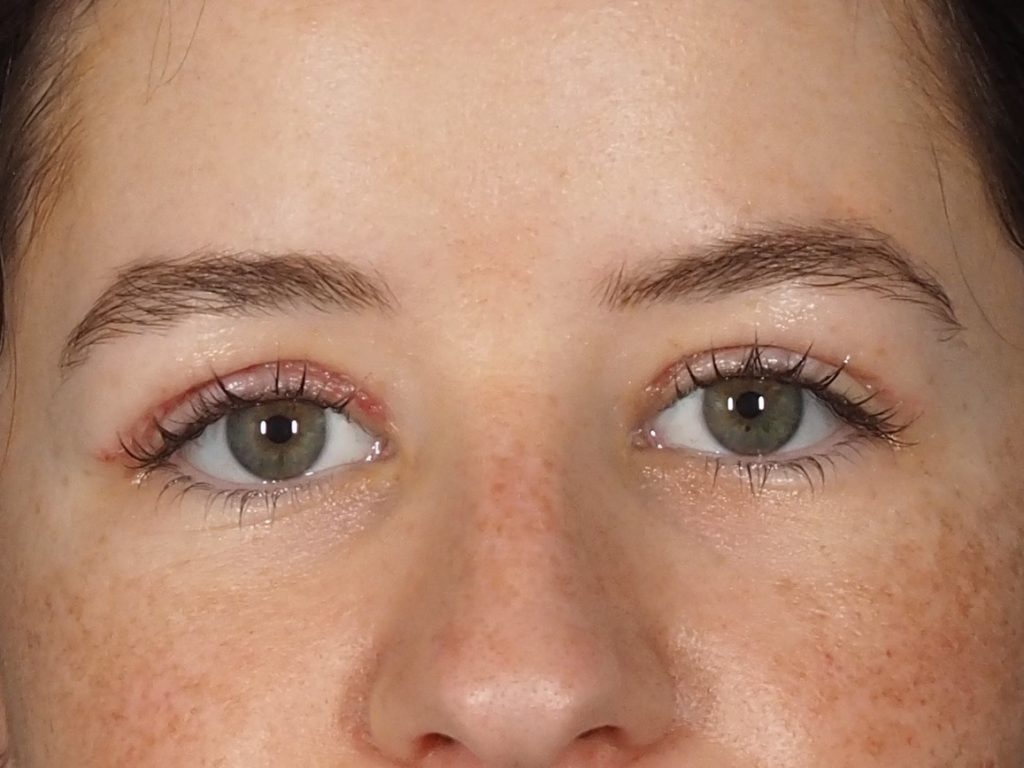
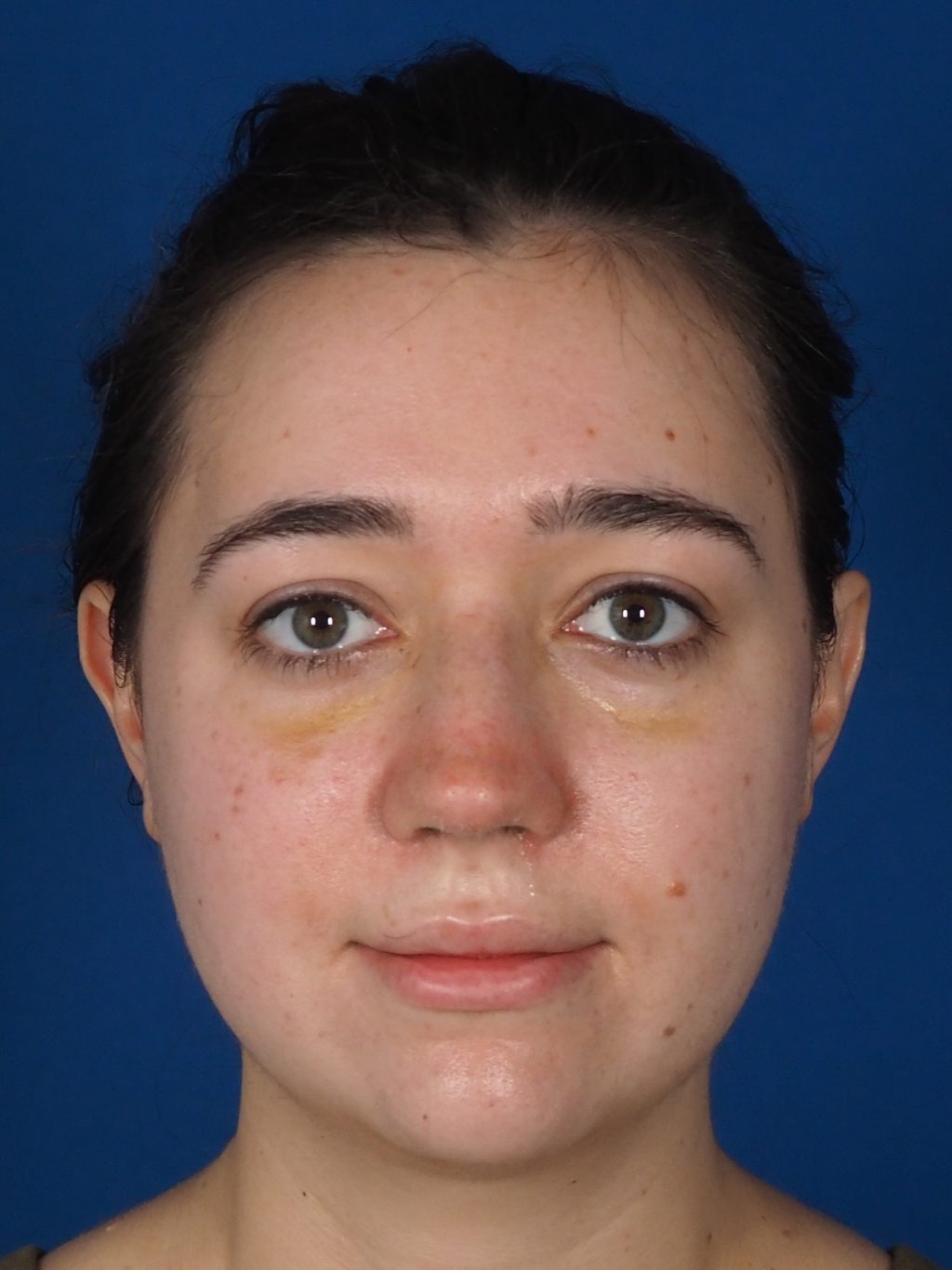
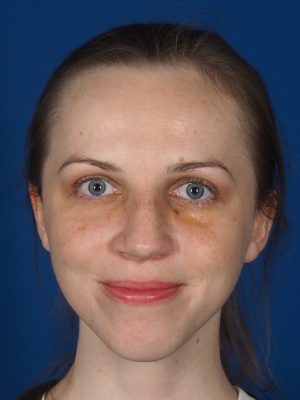
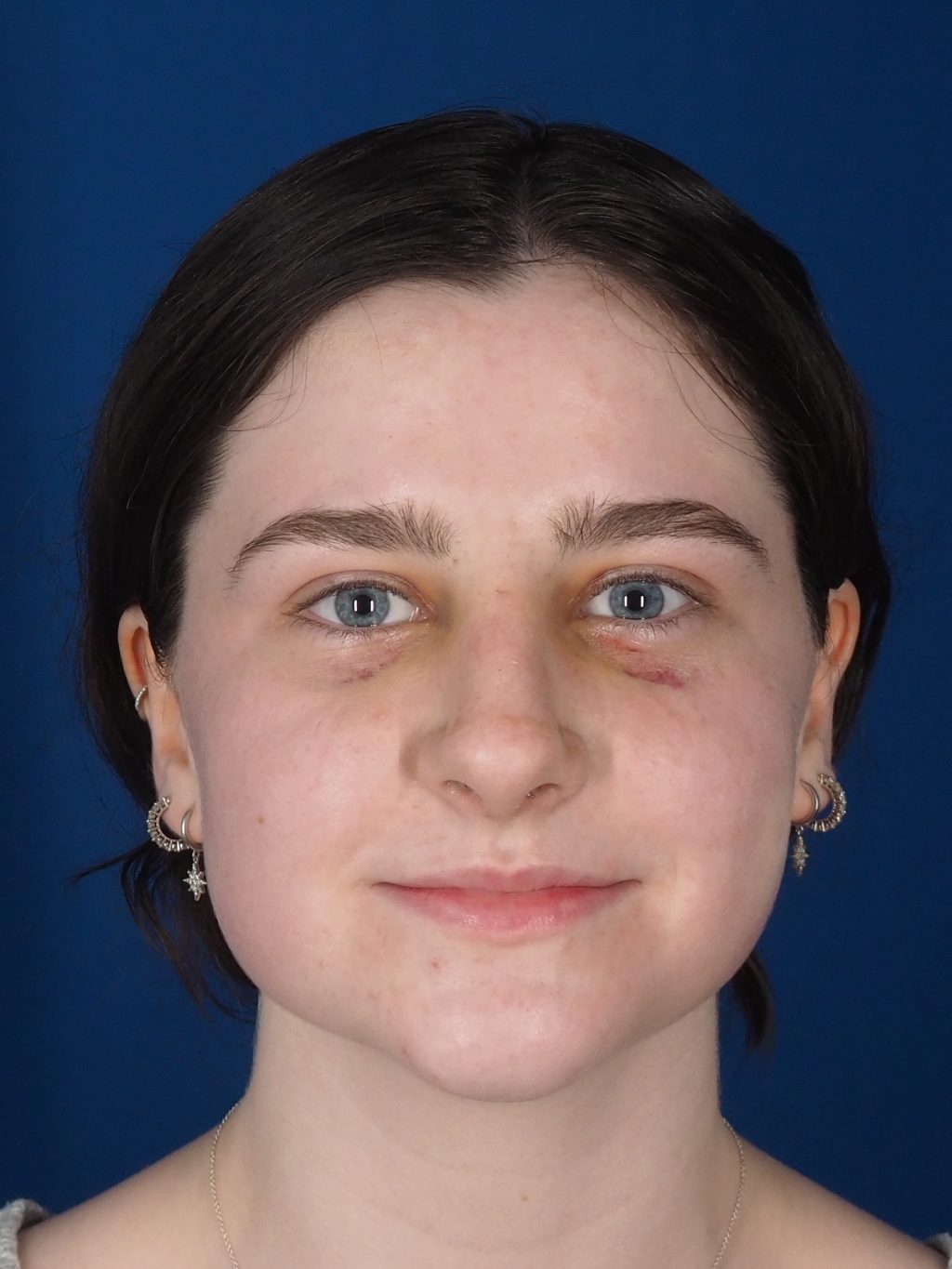
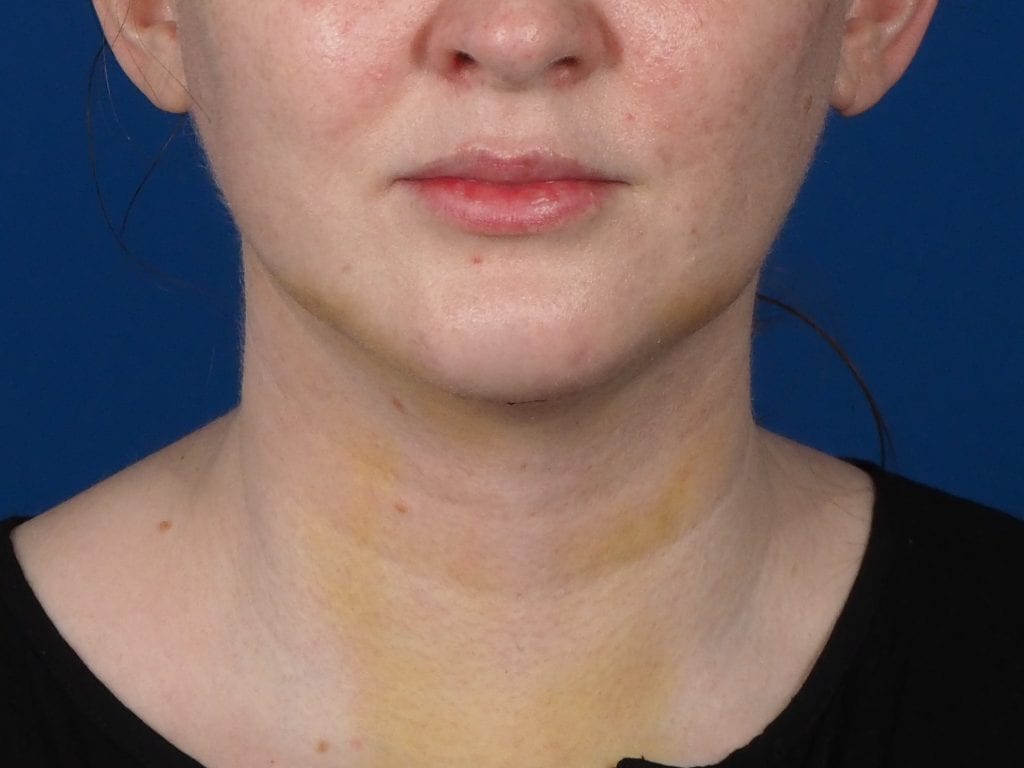
Leave a Reply